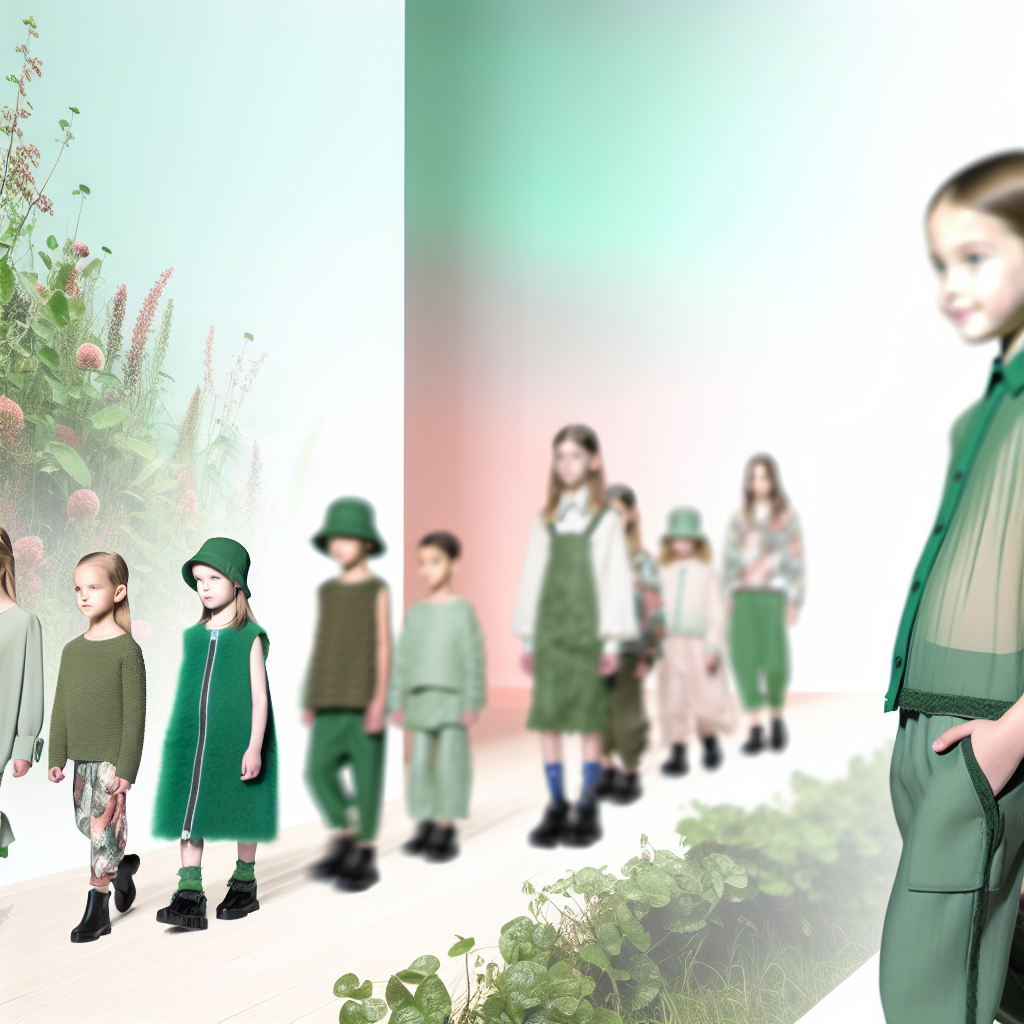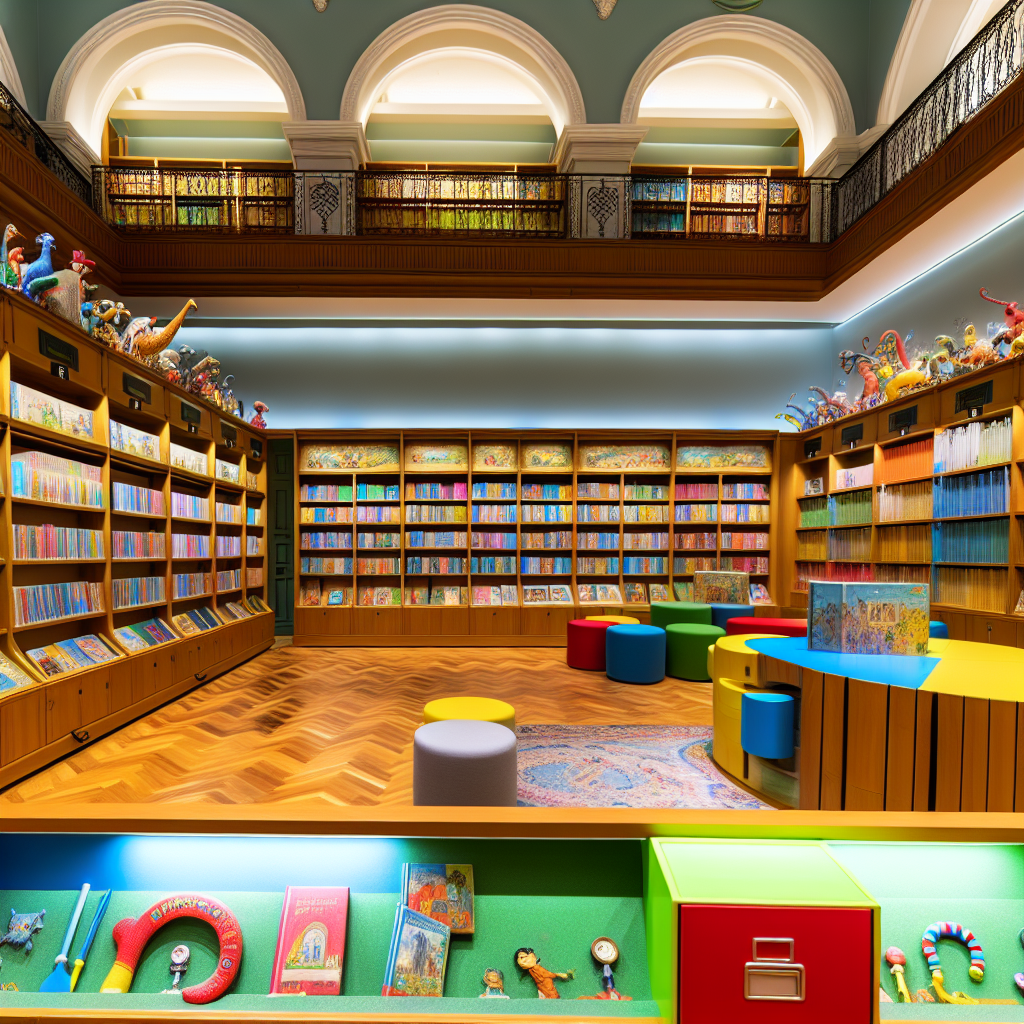Designer Children’s Wear Sustainable Collections
Introduction
In the evolving landscape of luxury fashion, sustainability is no longer a trend—it’s a responsibility. Affluent families who invest in high-end children’s clothing are increasingly seeking not just quality and craftsmanship but also accountability and environmental ethics behind their purchases. This shift is driving a remarkable transformation in designer children’s wear, particularly in the emergence and expansion of sustainable collections crafted by established luxury brands and innovative newcomers alike.
The luxury children’s fashion market, traditionally defined by exclusivity, meticulous design, and plush materials, is now embracing the principles of circular fashion. This includes choosing biodegradable fabrics, non-toxic dyes, and ethical production practices, along with offering recycling and resale programs. Brands like Stella McCartney Kids, Bonpoint, and Mini Rodini are pioneering this transition, creating collections rooted in ethical labor and environmentally-conscious materials—all without compromising on elegance or performance.
What’s fueling this change among high-end consumers? Awareness. Modern parents of means are driven by a deeper understanding of sustainability’s long-term impact on both global ecology and familial legacy. They recognize that the choices they make today shape the world their children will inherit tomorrow. Further influencing this behavior is the increase in information accessibility, eco-conscious movements in adult fashion, and the rise of Gen Alpha—whose parents are more educationally informed and ethically inclined than ever before.
Additionally, luxury has taken on a new meaning. It’s no longer just about opulence; it’s about purpose. Designer children’s wear that promotes sustainability provides a narrative that affirms a family’s values. It tells a story of longevity, stewardship, and a commitment to the future, aligning closely with the lifestyle and ethics of conscientious high-net-worth individuals.
As we delve deeper into this fascinating intersection of luxury and responsibility, we’ll explore the innovations that designers are incorporating into their sustainable children’s lines and examine scientific studies and professional insights supporting this emergent lifestyle shift.
Features
The focus on sustainable textiles, non-toxic manufacturing, and ethical supply chains in designer children’s wear isn’t just fashionable—it is backed by science and expert opinion. Medical professionals and environmental researchers alike have identified several reasons why transitioning to sustainable collections is beneficial not only for the planet but also for children’s health.
First, consider the health impact of traditional garment manufacturing. According to a study published in the Journal of Exposure Science and Environmental Epidemiology, many synthetic textiles and conventional dyeing processes expose children to volatile organic compounds (VOCs), phthalates, and formaldehyde. These chemicals have been linked to skin irritations, hormonal disruptions, and respiratory issues. In contrast, organic, sustainably sourced materials—such as organic cotton, TENCEL™ lyocell fibers, and bamboo—are free from such harmful additives, making them considerably safer for children’s delicate skin.
A report by the American Academy of Pediatrics highlights the importance of using toxin-free textiles in children’s products, especially clothing, sleepwear, and accessories that come into direct contact with the skin. Sustainable designer collections frequently adhere to certifications such as OEKO-TEX® Standard 100 and the Global Organic Textile Standard (GOTS). These certifications demand rigorous testing to ensure that garments are free from toxic substances, guaranteeing that they are safe for children.
Environmental impact is another major factor prompting this shift. Fast fashion is a significant contributor to global carbon emissions—approximately 10%—and is the second-largest consumer of water resources, according to the United Nations Environment Programme (UNEP). Luxury children’s designers adopting sustainable practices are leading by example, producing smaller, more responsible collection runs, using biodegradable materials, and reducing water and energy consumption. For example, Stella McCartney Kids uses upcycled polyester and organic cotton sourced from regenerative farms. These initiatives not only mitigate environmental harm but also instill values of ecological stewardship in children from a young age.
From a psychological standpoint, a study published in the Journal of Business Research in 2020 suggests that ethically-made clothing can have a positive behavioral impact on children. Wearing garments that align with sustainable and ethical principles subtly reinforces environmental awareness and reflects the family’s values. In luxury households, where decisions are often legacy-driven, introducing ethical fashion in childhood can imprint a deep sense of responsibility and conscientiousness for life.
Moreover, designers are incorporating circular fashion programs that encourage garment recycling, repurposing, and resale. These options are teaching children—especially in affluent contexts where consumption can be linear—the concept of giving, sharing, and responsible ownership. It’s a transformative pathway towards building generational awareness and nurturing a culture where luxury and accountability walk hand in hand.
Conclusion
Sustainable designer children’s wear is no longer an emerging category; it is a growing standard that harmonizes ethics, elegance, and innovation. As more affluent families gravitate toward purposeful luxury, they are modeling mindful consumption for future generations. Investing in clothing that prioritizes health, supports responsible ecosystems, and instills essential values is a profound act of modern parenthood.
This concept redefines what it means to be well-dressed—not simply in terms of external appearance, but in alignment with deeper philosophical values. From safeguarding children’s health to being a catalyst in the responsible fashion movement, sustainability in luxury children’s fashion is more than a style—it’s a lifestyle with lasting impact. Thoughtful elegance, now, is not measured solely by thread count or cut, but by legacy, impact, and integrity.
References
- Zota, A. R., et al. (2016). “Childhood exposure to select flame retardants and phthalates in the United States.” Journal of Exposure Science and Environmental Epidemiology.
- American Academy of Pediatrics. (2011). “Policy Statement: Chemical-Management Policy: Prioritizing Children’s Health.”
- UNEP. (2021). “Putting the Brakes on Fast Fashion.”
- Journal of Business Research. (2020). “Consumer behavior toward sustainability in luxury goods.”
- OEKO-TEX® Standard 100.
- Global Organic Textile Standard (GOTS).
- Stella McCartney Kids – Sustainability Commitments.

Dominic E. is a passionate filmmaker navigating the exciting intersection of art and science. By day, he delves into the complexities of the human body as a full-time medical writer, meticulously translating intricate medical concepts into accessible and engaging narratives. By night, he explores the boundless realm of cinematic storytelling, crafting narratives that evoke emotion and challenge perspectives. Film Student and Full-time Medical Writer for ContentVendor.com




